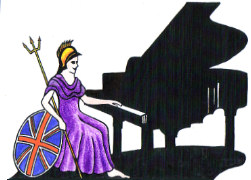Teachers, Accompanists and Piano Entertainers in the UK

UK Piano Page

5 Bridge St
Kettering, Northamptonshire NN14 6EW
England
As a family business, we have specialised in
High Street Llanerchymedd
Llanfairpwllgwyngyll, Anglesey LL65 3LS
Wales/Cymru
We are a retail Musical Instrument Company in
38 Joel Street
Northwood Hills
Northwood, London HA6 1PA
England
We are importers and distributors of new and
194 Penn Road
High Wycombe, Buckinghamshire HP15 7 NU
England
Sell both new & used pianos, superb choice of 75
28 Stamford New Road
Altrincham, Cheshire WA14 1EJ
England
If you are not near to a Dawsons store, you can
Music Festival for performers and guests Our 10th
18-06-2022 01:30PM
The Morecambe Bay Piano Group was set up to extend
11-12-2021 02:00PM
The Morecambe Bay Piano Group was set up to extend
08-01-2022 02:00PM
The Morecambe Bay Piano Group was set up to extend
12-02-2022 02:00PM
Piano Veneers and Finishes
Some of the piano veneers and finishes you can have on upright and grand piano today
Cherry Gloss Polish
Mahogany Gloss Polish
Makassar Ebony
Cherry Satin
Bubinga Gloss Polish
Walnut Satin with Rosewood Inlay
Walnut Gloss Polish
Camphor
Walnut Satin
Alder Satin
Ebony Gloss Polish
White Gloss Polish
Pink Gloss Polish
Blue Gloss Polish
Red Gloss Polish